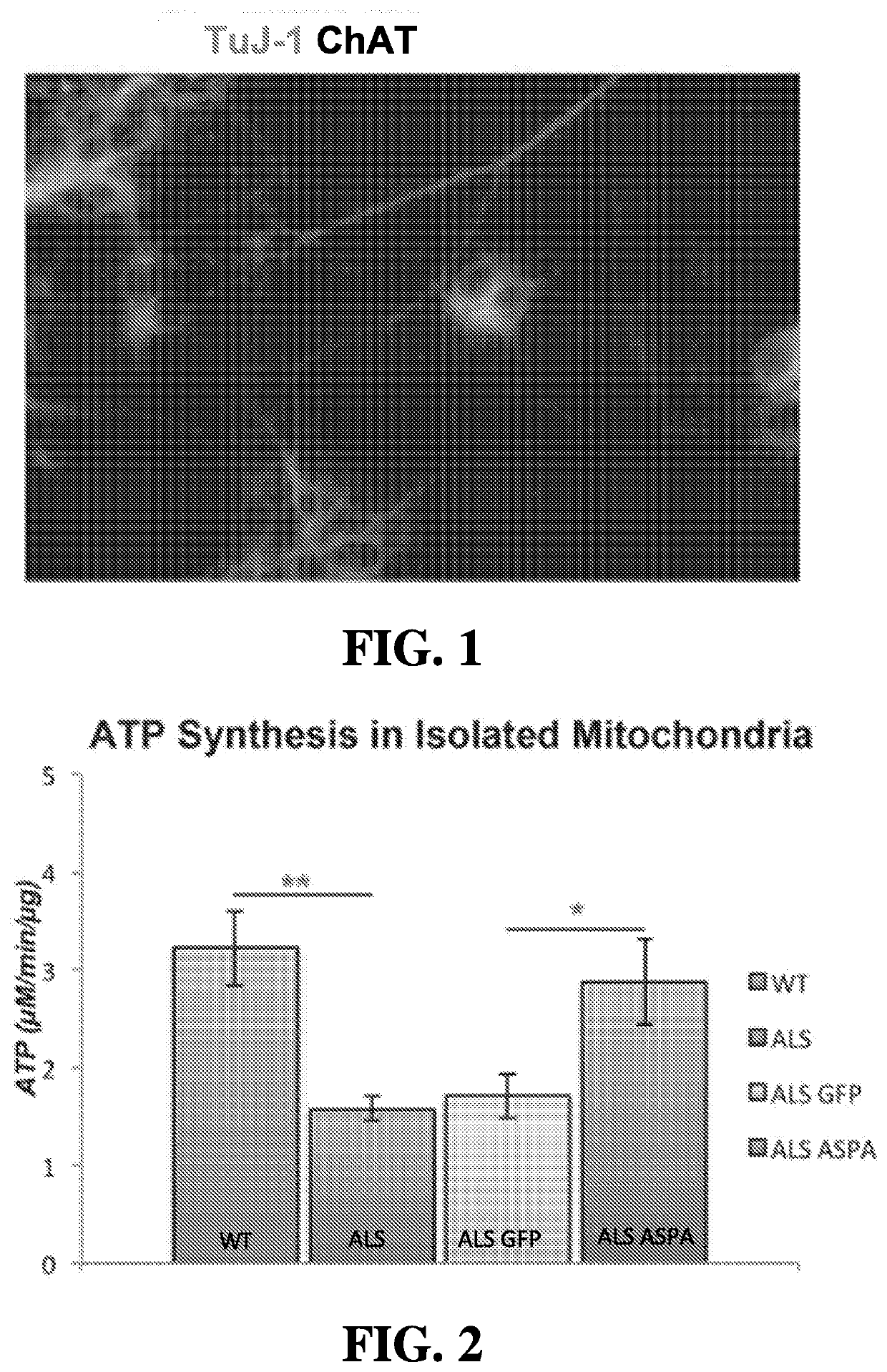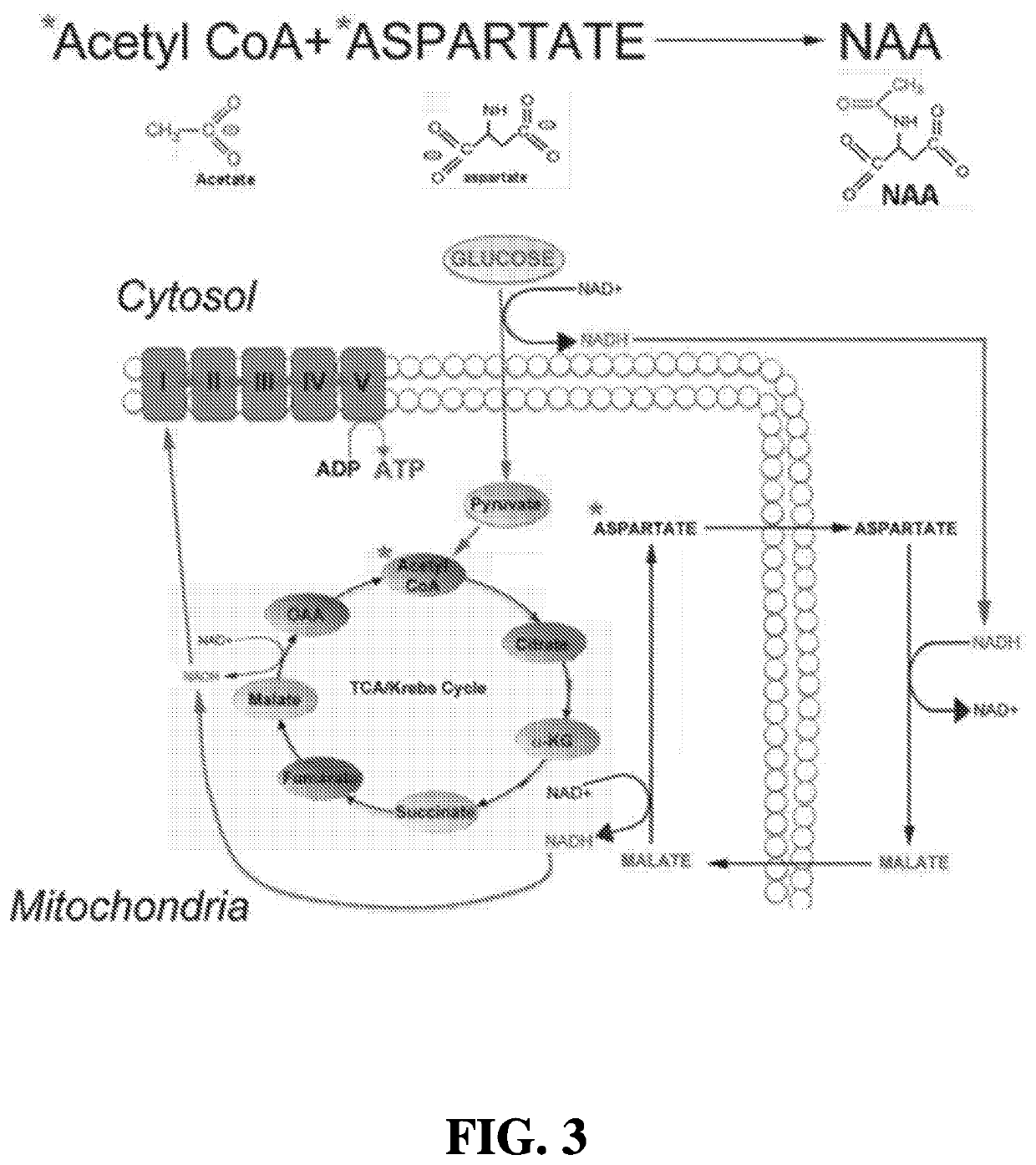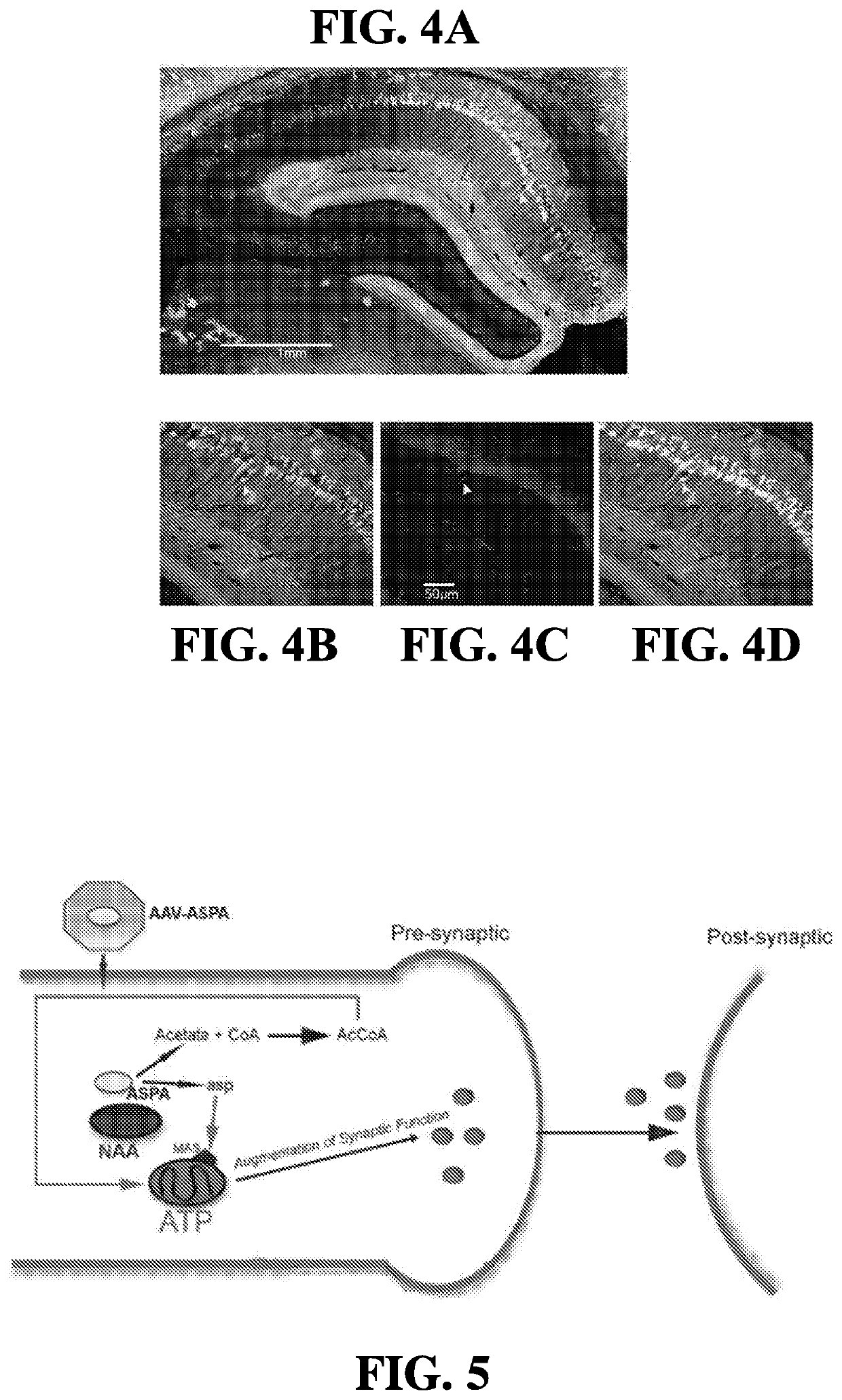Methods of Treating or Preventing Amyotrophic Lateral Sclerosis
a technology of amyotrophic lateral sclerosis and amyotrophic lateral sclerosis, which is applied in the direction of peptide/protein ingredients, drug compositions, genetic material ingredients, etc., can solve the problems of not being able to cure als, unable to achieve long-term efficacy of edaravone in patients with als, and difficulty in speaking, swallowing and eventually breathing. , to achieve the effect of increasing the level or activity of asparto
- Summary
- Abstract
- Description
- Claims
- Application Information
AI Technical Summary
Benefits of technology
Problems solved by technology
Method used
Image
Examples
example 1
[0192]Unless otherwise noted, all starting materials were obtained from commercial suppliers and used without purification. As described herein, patient-derived induced pluripotent stem cells (iPSC) were obtained from an NIH-funded biorepository (www.nimhgenetics org / available_data / ipsc / ). Both normal healthy cells and cells from an individual harboring a mutation in SOD1 (N139K) and diagnosed with familial ALS were used. A differentiation protocol has been established that results in cultures of motor neurons after 40 days of treatment with a defined regimen of growth factors and specialized media (FIG. 1). Therapeutic (ASPA) and control (GFP) genes were packaged into AAV vectors, and an initial cohort of cells treated to assess effects on mitochondrial function. Mitochondria isolated from SOD1 mutant motor neurons were shown to have lower rates of ATP synthesis as compared to wild type cells, and transduction of these mutant cells with AAV-ASPA resulted in a significant rescue of ...
example 2
[0193]Analysis of ASPA-Derived Free Aspartate Promotion of ATP Synthesis in Isolated Mitochondria from 16 Week-Old SOD G93A Mouse Spinal Cord.
[0194]Mitochondria were isolated from whole 16-week old SOD G93A spinal cords using mechanical homogenization and differential centrifugation. Mitochondria were kept on ice until used for assays. The rate of ATP synthesis was analyzed in 30 μg of isolated mitochondria using a commercially available luminescence-based kit. A reaction mixture containing 1.0 mM malate, 1.0 mM glutamate, 10 mM NADH, and 0.2 mM ADP was prepared in a solution containing luciferase and luciferin, and 30 μg of mitochondria added. The addition of 2 U / ml of aspartate aminotransferase and 3 U / ml malate dehydrogenase drives the MAS and initiates ATP synthesis. In the present example, free aspartate was substituted for a reaction product generated by the incubation of lysates from cells overexpressing either wild type ASPA or a non-functional mutant ASPA with 5 mM NAA, as ...
example 3
AAV-ASPA Treatment of SOD G93A Mice
[0196]8-week old male SOD G93A mice were transduced with 1×1011 AAV9-CBh-ASPA vector genomes (vg) via lumbar intrathecal injection. Mice were anesthetized by inhalation anesthesia (isoflurane, 4% induction, maintenance titrated to effect) and vector delivered in a 5 μl volume. Control animals received 5 μl of physiological saline (0.9%) via the same route of administration (ROA). Animals were tested on an accelerating rotarod (4-40 rpm) once weekly from 9-16 weeks of age. The average latency to fall over 3 consecutive 3-minute trials was recorded (30 second rest period between individual trials). 9-11 weeks were designated as training sessions, and latency to fall at 12, 13, 14, 15, and 16 weeks compared between saline and AAV9-ASPA treated groups (n=15 / group). Rotarod analysis was performed by individuals blinded to the treatment group. AAV9-ASPA treated mutant mice presented with a long term improvement in rotarod performance (latency to fall) th...
PUM
| Property | Measurement | Unit |
|---|---|---|
| w/w | aaaaa | aaaaa |
| time | aaaaa | aaaaa |
| time | aaaaa | aaaaa |
Abstract
Description
Claims
Application Information
 Login to View More
Login to View More - R&D
- Intellectual Property
- Life Sciences
- Materials
- Tech Scout
- Unparalleled Data Quality
- Higher Quality Content
- 60% Fewer Hallucinations
Browse by: Latest US Patents, China's latest patents, Technical Efficacy Thesaurus, Application Domain, Technology Topic, Popular Technical Reports.
© 2025 PatSnap. All rights reserved.Legal|Privacy policy|Modern Slavery Act Transparency Statement|Sitemap|About US| Contact US: help@patsnap.com



